Pickleball has emerged as one of the fastest-growing sports globally, captivating players of all ages with its blend of tennis, badminton, and table tennis elements. As the sport evolves, so do the demands for specialized equipment, particularly when it comes to choosing the right pickleball paddles. Selecting the perfect paddle can be akin to finding the right pair of shoes for a marathon: the wrong fit may hinder performance and enjoyment, while the right choice empowers players to reach new heights.
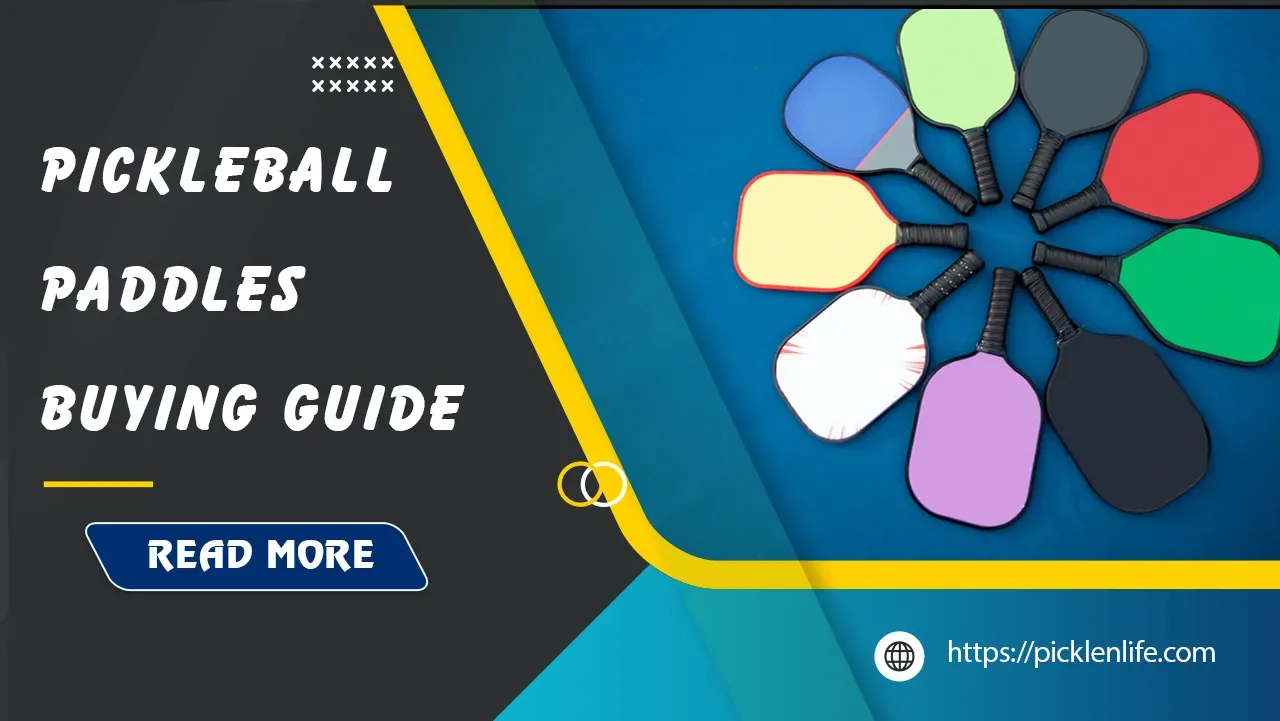
Understanding the various characteristics of paddles from grip size to material types equips players with the knowledge necessary to make informed decisions. Each paddle serves as a unique extension of a player’s personal style, preferences, and capabilities. In this comprehensive guide, we will explore the myriad factors you should consider while choosing a pickleball paddle, ensuring that whether you are a novice or a seasoned pro, you find your ideal match.
Understanding Paddle Characteristics
When diving into the world of pickleball paddles, it’s crucial to understand the characteristics that set them apart. Like a sculptor chiseling away at marble to reveal a masterpiece, you must explore the ins and outs of paddle features to uncover what truly resonates with your playing style. The main paddle characteristics can typically be categorized into several core areas: grip size, shapes, weight, materials, and core types.
Paddle grip size is akin to a handshake; it should convey confidence without being uncomfortable. The shape and weight determine agility and resistance; a heavy paddle might feel powerful in the swing but could also weigh you down in fast-paced rallies. Materials influence gameplay dynamics, determining how the ball responds upon impact. Finally, the core type plays a vital role in the paddle’s feel and performance. All these elements converge to create a paddle that empowers you to perform at your best on the court.
| Paddle Characteristic | Description |
|---|---|
| Grip Size | Affects comfort and control; sizes typically range from 4 to 4.5 inches. |
| Shapes | Standard, elongated, and wide-body shapes cater to different playing styles. |
| Weight | Varies between lightweight (under 7.3 oz), medium (7.3 to 8.4 oz), and heavyweight (8.5 oz and above) options. |
| Materials | Common materials include wood, composite, and graphite, each offering distinctive benefits. |
| Core Types | Polymer, Nomex, and aluminum cores impact power, control, and stability. |
Choosing a paddle is your blank canvas, where each of these characteristics can play a role in crafting your game. Grasping the nuances behind these elements is your first steps toward selecting the perfect paddle, allowing you to express your unique style and enhance your enjoyment of the sport.
Grip Size
Grip size is more than just a mere measurement it is the threshold between comfort and discomfort on the court. In a sport where quick reactions and precision are crucial, the grip size can profoundly influence your ability to manipulate the paddle effectively. Typically, pickleball paddles are available in sizes like 4″, 4 1/8″, 4 1/4″, and 4 1/2″ in circumference.
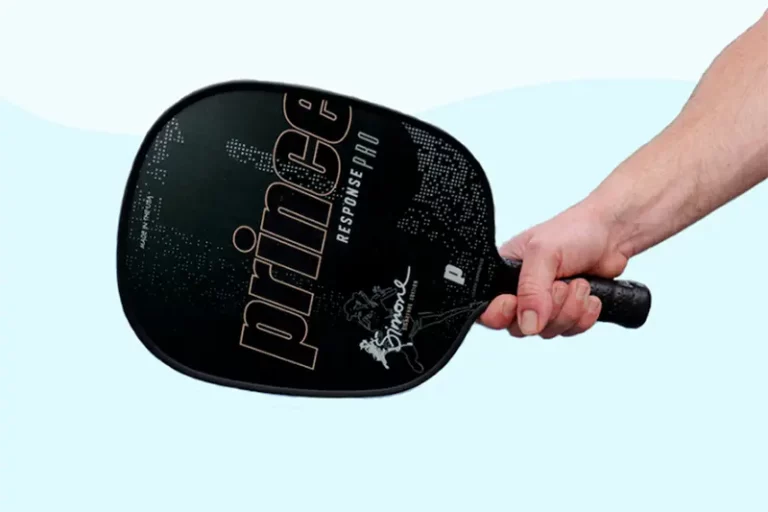
- Understanding Grip Sizes:
- Players under 5’2” may find a 4” grip more comfortable.
- Those between 5’3” and 5’8” typically prefer a 4 1/4” grip.
- Taller players, often 5’9” and above, can choose a 4 1/2” grip.
Your choice of grip size can also be evaluated through methods such as the Index Finger Test. Hold the paddle with your dominant hand and slide the index finger of your other hand into the space between your ring finger and palm; a snug fit indicates an appropriate grip size. Alternatively, the Ruler Test can be utilized: measure from the bottom crease of your palm to the tip of your ring finger the final number corresponds to your ideal grip size.
A proper grip not only impacts control and touch but also minimizes the risk of injuries due to excess strain or incorrect hand positioning. Selecting the right grip size can increase your confidence and comfort while enhancing overall performance on the court.
Paddle Shapes
Paddle shapes are often compared to the body types of athletes they each possess unique attributes that cater to different skills. The shape you choose can profoundly shape pun intended your gameplay strategy. The most common paddle shapes consist of the standard, elongated, and wide-body variations, each impacting reach, power, and control.
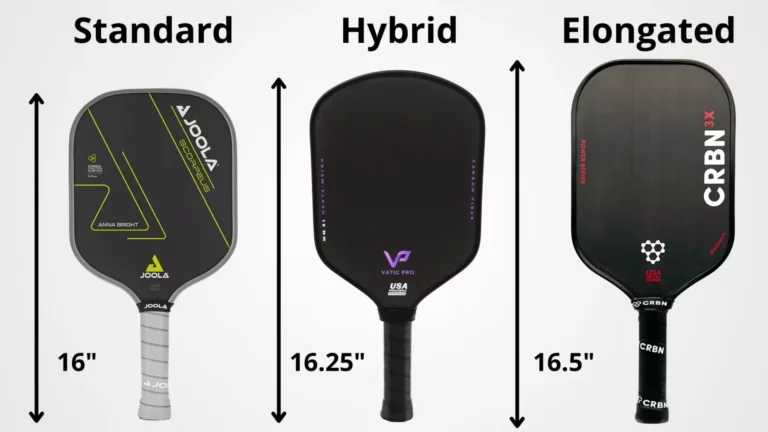
- Standard Shape:
- Typical dimensions of around 16” in length and 8” in width, offering a balanced blend of control and power, making it highly versatile for various playing styles.
- Elongated Shape:
- Feature a longer design, often measuring between 16.5” to 17”, tailored for players seeking enhanced reach and spin, ideal for singles play. However, the narrower width may compromise some control.
- Wide-body Shape:
- This design prioritizes a larger sweet spot and is excellent for players who tend to rely on power rather than finesse. Its broader paddle surface allows players to hit hard shots with reduced chances of mishits.
Selecting a paddle shape ultimately relies on your unique playing style. If you play a variety of strategies or mix power and control effectively, a standard shape may suit you best. For those who rely heavily on volleys or have a strong net presence, an elongated or wide-body shape might be the perfect fit.
Paddle Weight
The weight of your paddle plays a crucial role in determining your ability to control shots and minimize fatigue. As with selecting the right exercise weights, determining the ideal paddle weight depends on your own strengths and style of play.
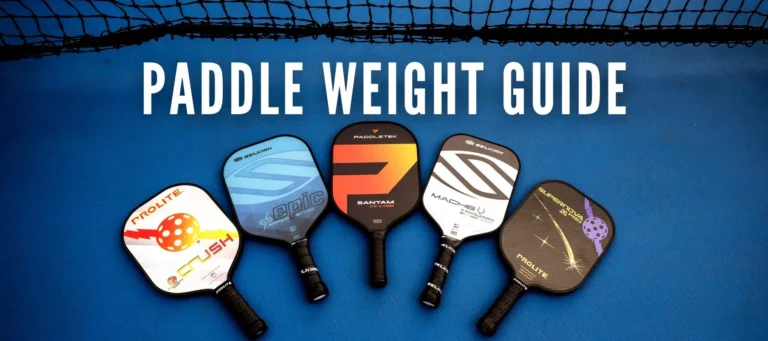
- Lightweight Paddles (< 7.3 oz):
- Great for players who prioritize maneuverability and quick reactions. These paddles are perfect for net play, allowing for finesse shots like soft dinks and drops, but may lack the power needed for distance shots.
- Medium Weight Paddles (7.3-8.4 oz):
- Often the favored choice among beginners, medium-weight paddles strike an ideal balance between control and power. They provide enough heft for stable shots while remaining lightweight enough to minimize arm fatigue.
- Heavyweight Paddles (8.5 oz+):
- More suited for power players, these paddles deliver stronger shots but can lead to greater arm fatigue over prolonged play. They are ideal for baseline players wanting to dominate with powerful smashes, yet players should be wary of the potential for injury from excessive weight.
Each weight category presents distinct advantages that cater to different player preferences, allowing you to tailor your choice according to your style and physical capabilities. Testing paddles of various weights before making a decision can provide first-hand insight into how it feels during play.
Paddle Materials
Just as the choice of fabric impacts a tailored suit, the materials used in paddles critically determine their performance attributes. The two main components include the paddle face and the core, each made from various materials that offer distinct benefits.
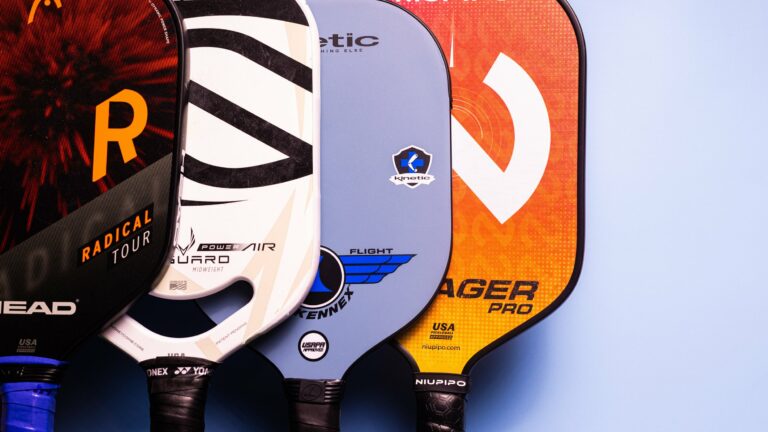
- Paddle Faces: Common materials include:
- Wood: Traditionally used, heavier and durable, best suited for recreational play.
- Fiberglass: Offers good balance and control, often found in intermediate paddles.
- Graphite and Composite: Known for being lightweight and responsive, these materials are ideal for advanced players valuing power and finesse.
- Core Materials:
- Polymer/Polypropylene: Soft and durable, ideal for recreational players. These cores offer excellent control while minimizing noise.
- Nomex: Stiffer and lightweight, tailored for aggressive play styles. These cores provide powerful shots but may lack some soft touch.
- Aluminum: Lightweight and stable, they are less commonly used due to diminished responsiveness.
Choosing the right paddle material involves weighing your own skill level, style of play, and sensitivity to vibrations or noise. Investing in higher-quality materials can significantly enhance your gaming experience and provide more adaptability for evolving techniques on the court.
Paddle Cores
As the heart of the paddle, the core type you choose influences not only how the paddle feels but also how it performs. Each core type caters to varying player styles and goals, impacting aspects like power, control, and noise.
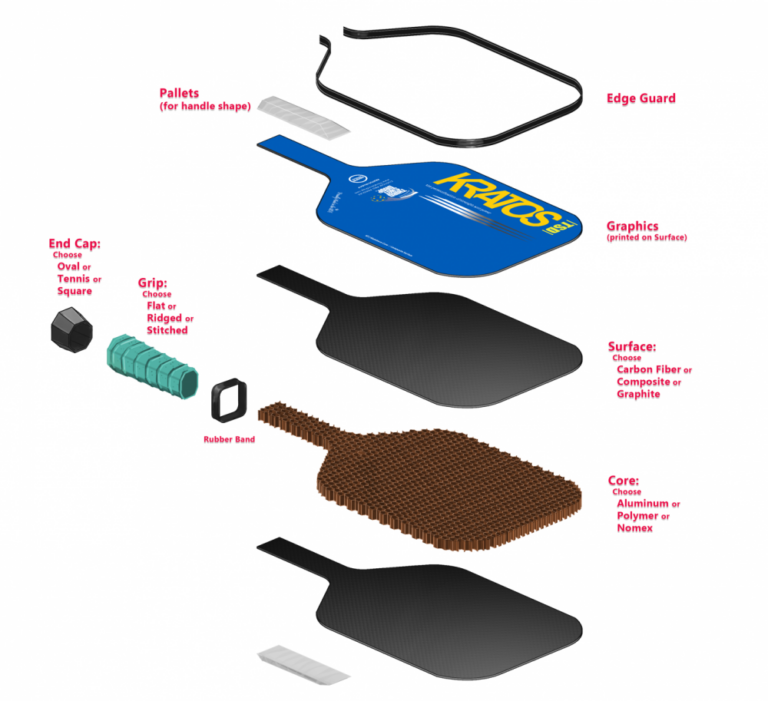
- Polymer Cores:
- Known for their balance of power and control, these cores feature a honeycomb structure that provides excellent touch and responsiveness. They are quieter during play, making them a great choice for both recreational and competitive players.
- Nomex Cores:
- These cores enable a quick response and are lightweight but often produce more noise during play. Suitable for advanced players seeking maximum power, Novex cores do require careful control due to their responsiveness.
- Aluminum Cores:
- Primarily known for stability and lightweight design, aluminum cores can provide good power generation but are less favored for nuanced play, making them more appropriate for certain play styles.
Selecting the appropriate pickleball paddle core not only depends on personal preferences but also on the type of gameplay you aspire to achieve. Understanding the distinctions between core types allows you to create the ideal union between your skills and technique.
Evaluating Playing Style
Much like determining whether you’re a sprinting athlete or a endurance runner, understanding your playing style is pivotal in selecting the right paddle. Depending on your approach to the game, you’ll want to consider factors ranging from power to finesse.

- Power Players: Those who favor aggressive strikes will require a paddle that maximizes power potential. A heavier paddle can assist in delivering power strokes but will need to balance out control to prevent errors.
- Control Players: If precision and placement form the backbone of your gameplay, opt for lighter paddles that enhance maneuverability. Paddles with larger sweet spots enable subtle touches, making them integral for creating strategic shots.
- All-Around Players: Ultimately, if you balance power and control, as many players do, a medium-weight paddle will give you the versatility needed to adapt strategy depending on your opponent.
Different Paddles for Different Skill Levels
Much like tailored clothing, paddles should fit the wearer in this case, a player’s skill level shapes the appropriate paddle choice.
- Beginners: Newcomers should consider paddles that provide a large sweet spot, with forgiving surfaces and lightweight designs. Their choice will be pivotal in developing essential skills like consistency and precision without overwhelming them.
- Intermediate Players: As skills develop, players should seek paddles with balanced control and power. Composite models offer a range of options for evolving gameplay and help refine strategies.
- Advanced Players: Experienced players require paddles that align with their specific styles, often seeking out models tailored for ultimate precision and customization for very technical shots.
By carefully evaluating current skill levels and considering how paddle characteristics complement gameplay, players can refine their toolset to enhance performance.
Matching Paddle Shape to Playing Style
Like choosing the perfect brush for a painting, the paddle shape must align with your style of play. Paddle shapes range widely, and understanding their characteristics enables players to enhance their game.
- Standard Shape: Best for adaptable players who employ varied strategies; excellent for beginners and those transitioning into competitive play.
- Long Handle: Optimal for players employing two-handed backhands; these paddles allow for increased leverage but can compromise surface area.
- Wide Body Shape: Ideal for power-centric gameplay, these paddles increase consistency with a larger sweet spot.
By evaluating specific tactics or tendencies, players can select paddle shapes that complement their strengths while also addressing areas for growth.
Exploring Paddle Features
Diving deeper into paddle features, one can begin to appreciate the merits of various design elements that contribute to gameplay dynamics. Features such as surface texture, core material, and design intricacies create considerable variation in paddle performance.
- Surface Texture: The paddle’s texture influences how it interacts with the ball during play, particularly regarding spin potential. Textures that grip the ball allow for superior spin and placement, while smoother surfaces alleviate touch shots.
- Core Material: Your choice of core such as polymer versus Nomex affects power and sound. Polymer cores offer more control and softness, while Nomex provides pop and rebounds that suit aggressive players.
By integrating these features catering to both your style and skill level, one can optimize their playing experience and improve on-court performance.
Paddle Surface Texture and Spin Potential
Surface texture arguably determines a player’s ability to achieve impressive spins and sophisticated ball control. The paddle’s surface plays a crucial role in how it grips the ball during impact, influencing a player’s game strategy.
- Influence on Spin: A paddle with a rougher surface texture enhances spin by allowing for increased friction between the paddle and ball. The result is greater ball rotation that confuses opponents and places shots in difficult positions for them to retrieve.
- Legal Considerations: It’s important to adhere to regulations set by the USA Pickleball Association (USAPA). Excessive texturing methods that significantly increase spin capabilities may not comply with competitive guidelines.
- Types of Textures: Techniques for modifying surface textures include sanding and adding grip tape, which enhances paddle grip without compromising integrity. Players should choose wisely based on strategy and the desired effects on ball placement.
Understanding how surface texture interacts with gameplay allows players to refine their technique and execute sophisticated shots that can turn a match in their favor.
Core Material and Performance
The core material of a pickleball paddle transforms its performance characteristics, shaping its responsiveness, vibration, and overall sound during play. By recognizing how different cores impact play, players can tailor their choices to align with the demands of their game style.
- Nomex Core: Lightweight and durable, this core favors aggressive strokes. It provides speed and power while requiring strong control. Players preferring fast-paced matches with explosive shots might gravitate toward this core.
- Polymer Core: Offering a combination of control and feel, polymer cores are ideal for player adaptability and touch. Their ability to absorb sound reduces noise while enhancing playability.
- Aluminum Core: Lightweight and rigid, but players may find a reduction in responsiveness compared to other core types. Best reserved for casual play or beginners who appreciate stability over finesse.
Choosing the right core material is paramount in ensuring your paddle complements your playing style and performance goals.
Selecting Based on Player Physique
Physical characteristics should inform your paddle selection strategy. The weight of the paddle must correspond to your own physique, crafting an optimal balance that promotes endurance and agility on the court.
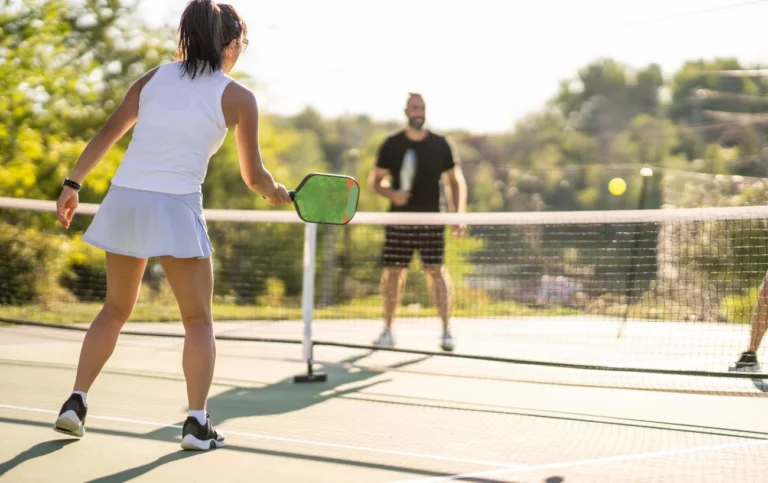
- Weight Considerations: Lighter paddles cater to players who prioritize agility, whereas heavier paddles are for those capable of wielding strength for powerful shots.
- Testing Grip Size: Select a comfortable grip size based on hand dimensions. Picking one that is too small can result in cramps, while one too large can introduce control issues.
By tailoring your paddle to your body type and physical capabilities, you allow for maximum comfort on the court, which can translate into better performance.
Importance of Paddle Weight Relative to Strength
Paddle weight intersects crucially with playing style, endurance, and overall control. The relationship between paddle weight and individual strength must be assessed thoughtfully.
- Weight Options: Lightweight paddles enable quick reactions and agility beneficial for players with less upper body strength. In contrast, heavier paddles provide momentum but may lead to fatigue.
- Balance and Control: A well-balanced paddle may feel lighter, allowing for control even in variations of weight. Consider testing multiple options to discover the ideal balance for your preference.
Ultimately, finding a paddle weight that suits your personal fitness level enables you to perform at your best while minimizing risk for fatigue and injury.
Finding the Right Grip for Hand Size
Grip size is directly correlated with your hand size and shapes the paddle’s overall handling dynamics. An appropriate choice can enhance control while mitigating fatigue-causing strain.
- Grip Diameter: Standard pickleball grips often range between 4”- 4.5”. Test out paddles with different grip sizes to discover which feels best in your hand each player’s comfort and control level shifts based on grip diameter.
- Testing Methods: Hold the paddle and assess how your fingers fit around thegrip. The Index Finger Test will allow you to evaluate over five options, promoting your ability to switch sizes during gameplay.
- Feedback Mechanism: Regularly assess handle comfort during games. If you find instability or discomfort, consider trying thicker or thinner grips to enhance performance.
Balancing your grip size with effective technique can increase your paddle stability, providing better control during play.
Testing and Selection Process
Choosing the right pickleball paddle is a process that requires careful consideration and testing. Through an organized and structured approach, players can make informed decisions resulting in greater satisfaction.

- Understanding Your Needs: Assess your objectives in the game. Defining what you want from gameplay be it control, power, or balancing both can shape your choice.
- Demo Programs: Engage in demo opportunities wherever possible. Many stores offer paddle testing that will inform how various paddles feel in your hand during live gameplay.
- Key Features: Focus on specific attributes: weight, grip size, construction material, balance, and sweet spot. Offer yourself patience throughout testing; assessing weight, size, and feel develops your preferences effectively.
By creating a hands-on testing approach, players are empowered to select paddles that ensure comfort, control, and performance success.
How to Test Pickleball Paddles
Testing paddles is a critical part of the selection process that allows for first-hand experience with different options. Here’s how to make the most of test opportunities:
- Engagement: When you arrive for a demo, engage with the retailer or demo representative. Ask questions about the paddles’ construction, materials, and intended use characteristics.
- Testing Criteria: Play with various paddles across different scenarios service, volleys, dinks, and smash attempts. Taking note of how each paddle feels during these specific maneuvers deepens your understanding of their capabilities.
- Feedback Reflection: After testing, evaluate your qualitative feedback. Consider how each paddle performed based on your initial preferences; keep a record for ease during varied price selections.
- Comparative Analysis: After testing, compare paddles to see which matched your defined goals yet provided comfort and play ability during assessment.
By thoroughly testing paddles during the selection stages, you will secure a more informed choice that enhances your performance while catering to your unique gameplay preferences.
Analyzing Feedback and Adjustments
Once you have conducted your tests, analyzing feedback will provide insights necessary for decision-making. Evaluating your experiences helps refine your selection.
- Scoring System: Create a scoring system for various attributes (weight, grip comfort, control ability, and performance feedback). This allows for a visual guide when comparing favorite paddles.
- Personal Preferences: Reflect on how certain paddles felt regarding impact during gameplay. Did some feel heavier than expected? Were there any noticeable differences in comfort levels?
- Fine-tuning Choices: If a particular paddle felt awkward or uncomfortable, take note and be willing to adjust by testing alternate options that differ based on feedback.
By properly analyzing post-play feedback, you not only increase the chances of selecting the perfect paddle but can also fine-tune preferences catering to evolving gameplay strategies.
Popular Brands and Their Features
Understanding various brands in the market can streamline your selection process. Here’s an overview of leading paddle brands, their unique features, and what they might offer your game.
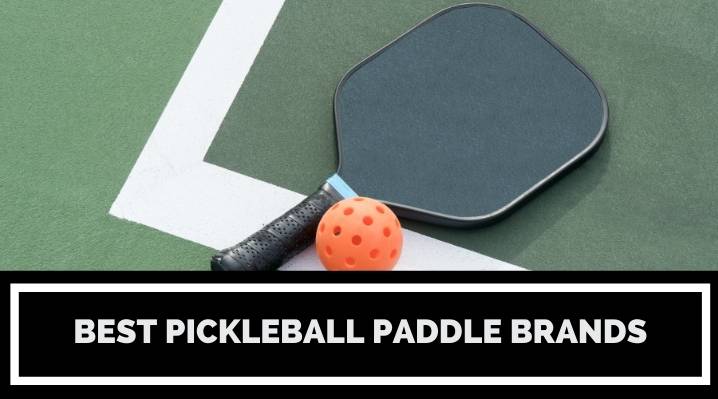
- Selkirk: Known for innovative designs and quality. The Amped series features a thicker X5 core for excellent power and control, while FiberFlex fiberglass enhances feel.
- Paddletek: Engaged in technology-driven advancements. The Tempest Wave Pro paddle prioritizes smart response technology for elevated performance. Excellent durability caters to versatile play styles.
- Onix: Notable for precision and balance. The Z5 model features a Nomex honeycomb core designed for durability while continuing to deliver a well-balanced handle for control on placement shots.
- Engage: Their Encore series excels in power and control, perfect for competitive players. The unique ControlPro polymer core boosts spin and precision.
- Joola: Known for affordable quality. Offering both budget-friendly models for beginners along with higher-end options, Joola paddles maintain good value while ensuring various playing styles.
- ProLite: A brand recognized for creating paddles that minimize vibration, enhancing comfort during gameplay. They offer advanced features that improve handling, control, and durability.
Evaluating these brands enables you to tailor paddle selections toward achieving the performance you desire while maximizing budget efficiency.
Overview of Leading Pickleball Paddle Brands
A broad overview of pickleball paddle manufacturers reveals diverse players within the industry. Examining their distinguishing features will assist in identifying which brand aligns best with your style.
| Brand | Special Features | Ideal For |
|---|---|---|
| Selkirk | FiberFlex face + X5 core; great control and power | Competitive Players |
| Paddletek | Smart Response Technology; durable and versatile | Intermediate & Advanced Players |
| Onix | Nomex core; precision and balanced performance | All Player Levels |
| Engage | ControlPro core + optimized design | Competitive & Power Players |
| Joola | Affordable options for beginners + advanced models | Beginners and recreational players |
| ProLite | Vibration dampening + advanced construction forms | Competitive players seeking durability |
By assessing various brands and identifying their specialized features, a player can narrow down suitable options that reflect personal goals and playing expectations.
Pros and Cons of Each Brand
Weighing the advantages and drawbacks of each paddle brand can help solidify your final choice. Understanding the overall value may steer you in selecting a paddle suited to your goals.
- Selkirk:
- Pros: Top quality, premium construction, good power and control.
- Cons: Price range can be high for beginners.
- Paddletek:
- Pros: Smart technology, durable, great mix of attributes.
- Cons: Heavier models can be overwhelming for beginners.
- Onix:
- Pros: Balanced performance, high versatility.
- Cons: Some models may not align with aggressive play styles.
- Engage:
- Pros: Great feedback and touch; spin-oriented design.
- Cons: May score higher on price, typically not entry-level.
- Joola:
- Pros: Affordability combined with versatility.
- Cons: Performance can vary among lower-end models.
- ProLite:
- Pros: High durability, superior construction.
- Cons: Limited range in lower price options or intro models.
Through careful analysis of the pros and cons related to your specific playing needs, discerning players can make a selection that aligns perfectly with their skillset.
Budget Considerations
When considering which paddle to invest in, budgeting is a crucial factor that influences your selection. Everyone has different requirements and economic constraints understanding the spendable range can ensure you find a paddle that balances quality with value.
- Price Ranges for Various Skill Levels:
- Beginner Paddles: $25-$70 for wood and lower-end composite models.
- Intermediate Paddles: $50-$100, featuring more advanced materials.
- Advanced Paddles: $100-$200+; designed for high performance and skilled play.
- Value vs. Cost in Paddle Selection:
- Identifying quality paddles involves assessing lasting value and performance against cost. It can be tempting to skimp for savings, yet investing in a higher-quality paddle can save costs in the long run through extended usage.
- Trial Options: Whenever possible, leverage any testing opportunities or paddle rental programs to sample a paddle before committing to purchase this can provide first-hand insight beyond just price tagging.
With performing your due diligence on budget questions, you can navigate options in realistic spending ranges leading to more informed paddle purchases that meet your needs.
Maintenance and Care for Your Paddle
Proper maintenance is essential for prolonging the life of your pickleball paddle. Like any sports gear, regular care and handling can lead to superior performance while avoiding harmful wear and tear.
- Cleaning After Each Use: Wipe down the paddle with a damp cloth post-game to remove dirt and sweat. Monthly deep cleans with mild soap and warm water can help maintain the aesthetics while ensuring it performs optimally.
- Proper Storage: Store your paddle in a cool, dry location, avoiding direct sunlight or extreme temperatures to minimize potential warping. Many players opt for protective covers during transport to prevent inevitable dings or scratches.
- Grip Maintenance: Regularly inspect your grip for durability if it feels soggy or lacks traction, consider replacing it. A good grip can make all the difference in providing control during intense matches.
- Avoidance of Harsh Conditions: Never leave paddles in hot environments or subject them to freezing temperatures; the materials may not withstand such extremes, leading to detrimental damage over time.
- Prompt Repair: If notable damage occurs, take suitable measures to address it immediately this could involve polishing scratches out or re-gluing delaminated edges.
By implementing these maintenance strategies, your paddle will stay in its prime condition, granting you both optimization and durability during gameplay.
Tips for Extending Paddle Lifespan
Extending your paddle’s lifespan is simple with a few calculated practices that cater to upkeep.
- Gentle Handling: Always treat your paddle as a delicate item. Avoid impacts with irregular surfaces or laying it down carelessly.
- Routine Inspections: Regular checks for wear and tear can enable you to identify upcoming issues that may hinder performance before they become problematic.
- Avoid Long-Term Exposure: Ensure your paddle does not stay in hot cars or damp conditions to further protect against material breakdown.
- Utilize Covers: Many players learn the hard way a protective cover is essential during transport.
Being proactive about care ensures longevity while maximizing enjoyment during play.
Recognizing Signs of Wear and When to Replace
Understanding signs of wear will help you recognize when it’s time for a new paddle. Over time and with continued usage, your paddle will experience changes to its structure and functionality.
- Visual Inspection: Regularly check for visible signs of wear cracks, chips, or changes in shape could impact performance.
- Performance Changes: If you start to notice a drop in responsiveness or power during play, it may be a sign that replacement is required.
- Sound Variations: A significant change in sound production when making contact with the ball can indicate your paddle might be “dying.”
- Grip Condition: If the grip has lost its tackiness or presents splits, it’s time to replace the grip or consider a new paddle if it’s been a while.
With adequate observance, you can proactively manage your pickleball equipment to amplify enjoyment and reduce fatigue or injuries that stem from misplaced paddles.
Conclusion and Final Tips
When choosing a pickleball paddle, the insights and details outlined throughout this guide empower you to make personalized choices that reflect your skills and playing style. A proper paddle tailored to your preferences can enhance performance, promote comfort, and create an overall enjoyable experience on the court.
Recap of Key Considerations for Choosing a Paddle
To recap, focus on these crucial areas:
- Grip Size: Ensure a fit that promotes control and comfort.
- Paddle Shape: Align the shape to your gameplay tactics be they power-focused or control-oriented.
- Weight: Determine the ideal weight based on your physical capabilities and how you choose to approach the game.
- Material: Assess core and surface materials that enhance playability and custom fit for your style.
- Testing: Engage in direct testing opportunities; hands-on evaluation can let you experience tactile differences firsthand.
Encouragement to Try Different Options
Do not shy away from experimenting with various options when seeking the ultimate paddle. The right paddle is one that complements your style while enhancing your enjoyment and performance on the court. Many sporting goods stores and manufacturers offer demo programs, allowing you to trial paddles before purchase and discover the nuances of feel, weight, and control that align perfectly with your skill level and personal preferences.
Finding the perfect pickleball paddles can be a journey, but with diligence, understanding, and an open mind, you will undoubtedly find an enhanced connection to the game that will propel your skills to new heights. Enjoy the experience, and may your journey to finding the ideal paddle be peppered with success on and off the court!
